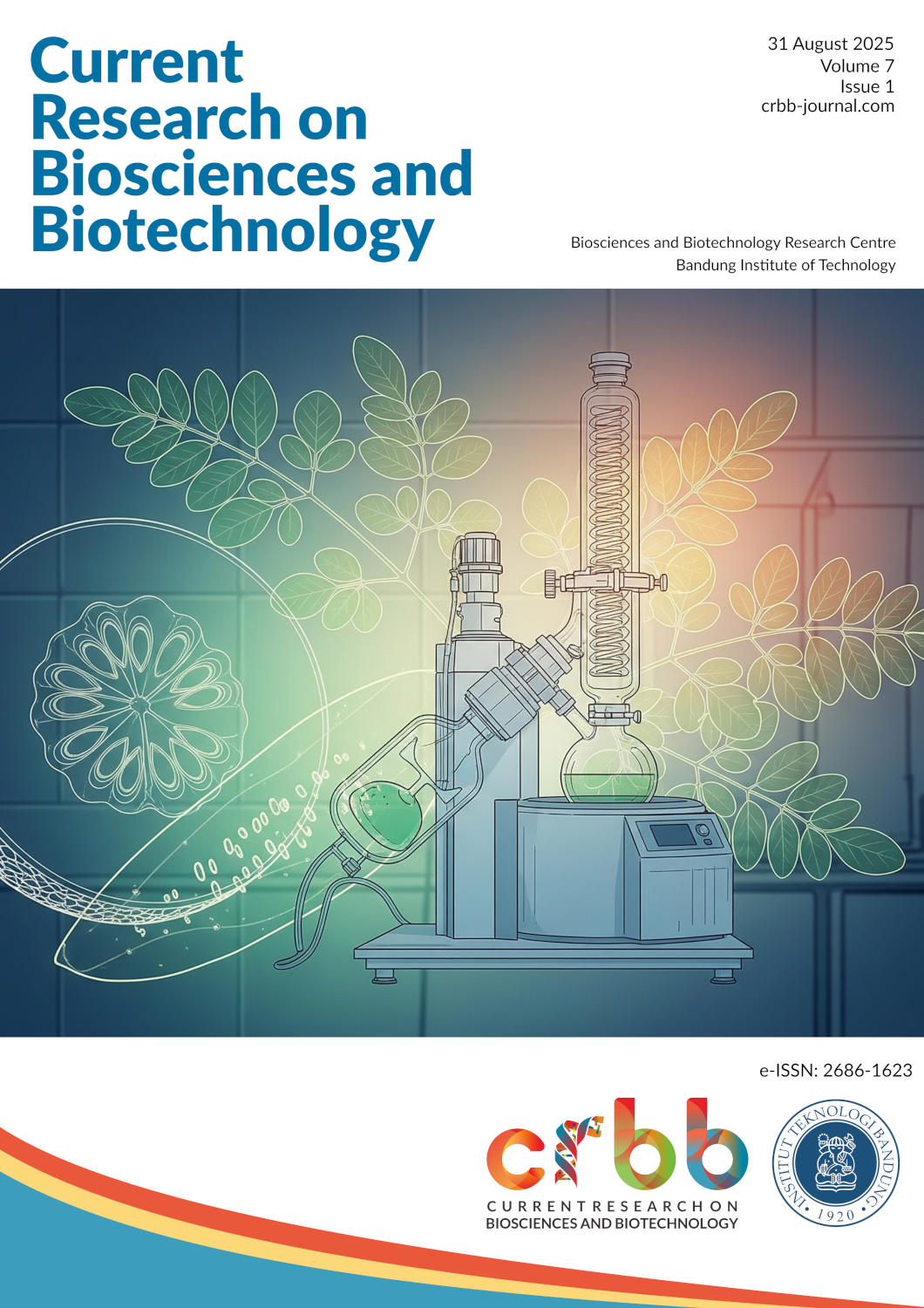Bioconversion of inorganic selenium to organic selenium in the black soldier fly (BSF) larvae
Main Article Content
Abstract
Selenium is one of the essential micronutrients needed to fulfil livestock nutrition, which can be found in inorganic and organic forms. Black Soldier Fly (BSF) larvae can potentially be used as a natural converter from inorganic selenium to organic selenium. However, the capacity and response of BSF larvae to convert selenium are still unknown. This study aims to determine the effect of inorganic selenium administration on BSF larvae. The research method was the determination of selenium concentration by UV-Vis spectrophotometry method based on the variation in the age of inorganic selenium administration in BSF larvae to the growth of BSF larvae, and the accumulation of selenium in BSF larvae, with variations in age of 0, 4, 8, and 12 days of age given sodium selenite (Na2SeO3) and control without administration of sodium selenite from the beginning to the end of rearing. There was no significant difference (p > 0.05) in the growth performance of BSF larvae and the accumulation of selenium in BSF larvae in the age variation experiment of BSF larvae when given sodium selenite. Based on the acquisition of larval mass, the growth rate of BSF larvae in the control treatment, with sodium selenite at 1 mg/kg, was 0.129, 0.093, 0.037, 0.156, and 0.128 mg/day at 0, 4, 8, and 12 days, respectively. These results indicate that inorganic selenium administration to BSF larvae can occur during the rearing period. In the experiment of variation in the concentration of inorganic selenium given to BSF larvae, the growth rate of BSF larvae was significantly higher (p < 0.05) when given 1000 mg/kg of sodium selenite, which was 0.467 mg/day.

